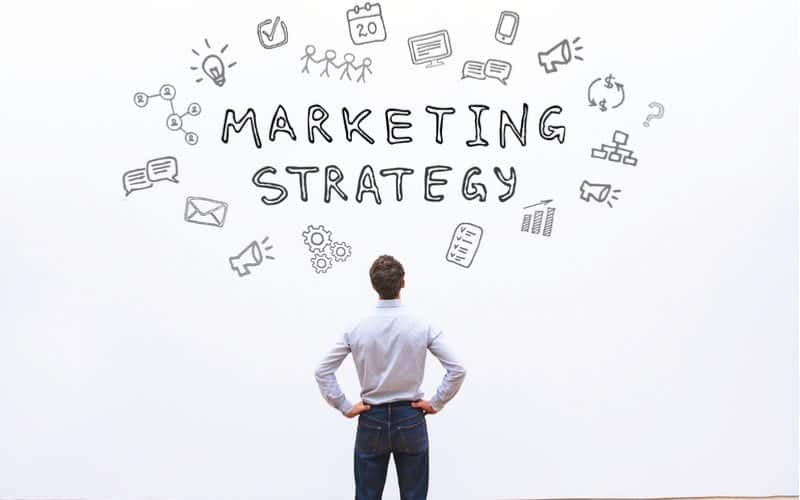Marketing can be incredibly complicated, especially nowadays with digital marketing being at the forefront of media. Digital marketing is all about algorithms, complex formulas, funnels, and metrics. Often you find you will have to go through these metrics with a fine-toothed comb to analyze your campaigns. This is why strategy is so important. Strategy is the guide for your campaigns so that you still have an eye on the destination as you are getting bogged down by metrics and complex funnel stages. Marketing strategy is also one of those things that can be super complex, or it can be relatively simple. It is malleable. In this article, I will break down certain aspects of marketing strategy but focus on the simple parts of a marketing strategy.
Your Offer is Everything
The offer is perhaps the most important part of a marketing strategy, a campaign, or even a business. If you have a great offer; an offer no one can refuse, you will get sales. Bringing in an experienced outsourced part-time CMO can help you formulate this offer and bring it to market.
This concept strips marketing down to the fundamentals and disregards the complexities of modern marketing. Get this done right, first. Then, you can make it as complicated as it needs to be.
The role of your offer in a marketing campaign is simple enough: it is a gateway for lead generation or a sale. It gives the prospect a simple “yes” or “no” answer. Buy or don’t buy; sign up or ignore.
Consider the importance of the offer, and the value it brings to your customer. An offer with more value, be it monetary, convenience, knowledge, etc., generally, will have a higher conversion rate. Let’s take monetary value as an example.
You spend $100 for 100 impressions. To keep things simple.
An offer worth $5 to the customer has a conversion rate of 5%. This means that of the 100 people that saw your offer, five signed up. A $20 customer acquisition cost plus the $5 per customer, $20+$25=$45. You spent a total of $45 for 5 customers, which works out a $9 customer acquisition cost ($45/5=$9)
An offer worth $2 to the same customers will have a much lower conversion rate. Perhaps 2%.
So, of those 100 people who saw the offer, only 2 signed up. Meaning that your customer acquisition cost in terms of ad spend was $50. Then add on the value given to the customer ($5) that brings $60 for 2 customers. A total customer acquisition cost of $30. Over 3X higher than the higher monetary value offer!
Higher value offer ($5 value) = $9 customer acquisition cost.
Lower value offer ($2 value) = $30 customer acquisition cost.
What I am trying to highlight with this example is do not be stingy on how much value you offer your customer. If you don’t give them enough out of your pocket, it could end up costing you money. If you think “That’s too much value I’m giving away there” then it is probably the perfect amount of value.
The more value that you give away, the higher your conversation rate will be, therefore the more money and customers you bring in. This is why nowadays we live in the era of free content. Youtube, Instagram and Facebook are filled with marketers and business owners giving away as much free content in a ‘race to the bottom’ type market of free content. Whoever can give away the most for free, and provide the most value for free will get more customers, followers, etc.
Sell Orange Slices, Not Donuts
The power of a great offer was summarized brilliantly in Chris Guillebeau’s book The $100 Startup, a New York Times Bestseller. In that, he talks about how he ran his first marathon in Seattle. He observed a well-intentioned volunteer at the side of the road handing out halves of Krispy Kreme donuts about halfway through the race. Perhaps unsurprisingly Chris and no other runners took this volunteer up on the offer. The box was completely full. Why? Because runners did not want a sugar rush and ensuing crash halfway through a marathon, understandably. There was another offer on the same road. A person handing out orange slices. These were completely snatched up by the marathon runners as they were refreshing and would not produce drastic changes in blood sugar.
If the audience was a gaggle of school children I am sure the donuts would have been gobbled up. Know your audience. Know what they want and more importantly, what they need.
The importance of this example is that it shows how the context of the offer is important, and if your offer is irresistible then, of course, you will have great success.
Just make sure that you are offering orange slices, not donuts.
Conclusion
In summation, the point of this article is simply to make sure that when your marketing efforts get very complicated, and you are bogged down with cost per lead, clickthrough rate, etc. Reassess the simple aspects of the entire campaign and strategy. A good place to start is with your offer for the simplest reason: a good offer will sell; a bad offer will not. Regardless of how good your marketing skills are, the simple reality of the offer is a huge indicator of a campaign’s success.
